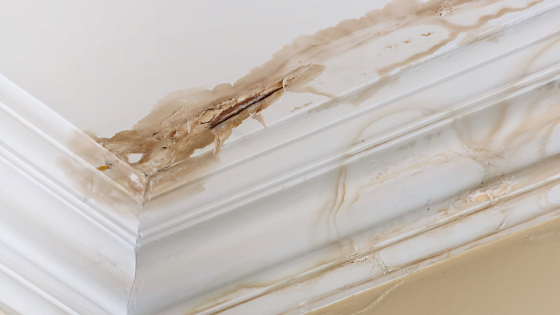Let’s face it, many people struggle with identifying the signs of water damage in their homes, and even when they do notice, it is often too late. The cost of water damage restoration is why many people delay repairs in their homes. This case is compounded because most people haven’t got a clue about what such damage looks like.
As surprising as that may sound, it is a fact and one of the main reasons why so many people end up paying thousands of dollars in water damage restoration costs. If you are proactive and can recognize the signs early, you can save up on a lot of money, but that’s hardly the case. So, to help you out, we will show you what water damage looks like.
That will help you get the necessary help quickly and prevent a catastrophe in your home. So, without further ado, let’s check out what water damage looks like.
Changes to Flooring, Ceilings, and Walls
One of the most obvious signs of water damage in your home is a change to your flooring, ceilings, or walls. However, it can be easy to overlook these signs, which will end up haunting you in the long run. You should look for paint peeling off the walls or create little bubbles, which shows a water leakage problem needs to be fixed immediately. Ceilings and walls may also turn spongy to the touch in the most severe cases of water damage.
Another often overlooked sign is wet flooring, mainly when it occurs in the room’s corners or in less frequently used areas in the house. There is already substantial damage done to the house’s subflooring before you notice the signs, which could be peeling tile or wet patches in the carpeting of your home.
Visible Mold or Stains
Another obvious sign of water damage in your home is when stains and mold start appearing on your walls. Stains will start appearing when there is a steady leak, and mold will show up when there are regularly damp areas. You can identify water stains from their yellowish-brown color, and they will appear in irregular shapes, mainly near the source of the leakage. You will find stains in your bathrooms, laundry rooms, and basements since these are the rooms where there is a lot of water being used.
Mold is a type of airborne fungus that grows in areas that remain consistently damp for extended periods. You are most likely to find mold in your carpeting, wood, ceilings, and drywall around your home, especially when they are damp for extended periods. Most people think that mold will appear black, but it can also be green, grey, or blue.
Musty Odors in Your Home
If you start smelling musty odors in your home it is a sure sign that there is water damage, which must be fixed quickly. The area from where the smell is emanating from may also appear to be damp, and you should inspect the area thoroughly to get to the root of the problem. You should also check for other signs of water damage such as stains or mold in the area.
If the musty smell develops after a winter thaw or after heavy rainfall, it could mean that there is a problem with the foundation of the house. You should always keep track of musty smells inside your home, especially if you have frequent plumbing problems or have noticed signs of water damage.
Unusually High Water Bills
One of the most common signs of a water damage problem in your home is an unusually high water bill that has come out of the blue. You should review all your previous bills and compare it with your recent bill to get a good idea. There can be minor fluctuations in the bill, but if you notice a sudden spike in the amount of water being used, it could point to a sure sign of damage.
You should check whether your toilets are constantly working and whether there are any leaks in the faucets. Also, check for leaks developing around appliances like washing machines and dishwashers. If you can’t identify the leak, you may have a leaking pipe in the walls of your home. Therefore, you should look for all the other signs of water damage we have mentioned.
Conclusion
The sad part about dealing with water damage in the home is that most people refuse to act and call up a water restoration company, even when they notice the signs. They are afraid of the costs associated with this, and they would prefer not to deal with it. However, this approach for dealing with water damage is wrong. It could lead to a major problem further down the line, costing them even more expensive repairs.
Water damage can destroy the structure of the home and can also cause damage to your furniture and appliances in the home. Depending on the problem, your insurance may also cover water damage in your house. So, don’t wait around when you notice the signs of this in your house and call in professional water damage restoration services immediately.








